
“Without lights, we would not know our own world”
The design world is empty without lighting. It is through lights that physical space is aesthetically defined, enhanced & perceived. Lights signify the value of space and consistently support the abstract and objective existence of the room. The most suggested and preferred lights for indoor lighting are interior led lights for homes. LED lights are energy-efficient & durable. The lights do not emit any toxic radiation and can be, without any worries, used in closed personal spaces for long hours.
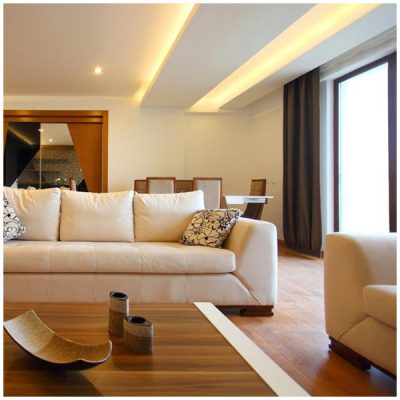
Contents
- 1 1. Optimal Color Management
- 2 2. Aid To Our Working Activities
- 3 3. Uplifting The Value Of A Space
- 4 4. Playing With The Illusion Of Space
- 5 Statement Lights
- 6 Geometric Lighting Patterns
- 6.1 Buy LED Indoor Lighting In Home’s Interior Designing
- 6.2 1. Energy Efficiency
- 6.3 2. Flexibility and Versatility
- 6.4 3. Design and Aesthetic Appeal
- 6.5 4. Customizable Lighting Schemes
- 6.6 5. Improved Task Lighting
- 6.7 6. Enhancing Room Size Perception
- 6.8 7. Safety and Comfort
- 6.9 8. Low Maintenance
- 6.10 9. Eco-Friendly and Sustainable
- 6.11 10. Increased Property Value
- 6.12 LED Lighting Applications in Interior Design
- 6.13 Best LED Lighting Options for Different Spaces
- 6.14 Conclusion: The Role of LED Lighting in Interior Design
How LED Indoor Lighting Plays A Crucial Role In Home Renovation?
1. Optimal Color Management
We all know that it is our sense of vision that helps us see the beauty of the world. Proper lights are a delightful complement to vision. Strategically led lights ensure optimal color management. Every room has a theme of its own and a unique color palette. Lights help in adding/subtracting the color-play of the rooms. Like, the dark theme of a room leads to the perception of smaller spaces. White is usually preferred as it tricks into perceiving larger rooms and uncluttered themes. There are many different lighting styles that can aid in extensive color management. More on this is discussed below in the “Lighting Ideas” section.
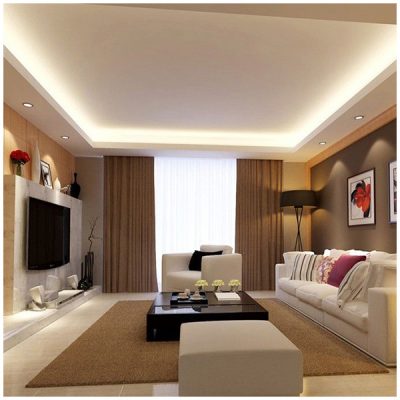
2. Aid To Our Working Activities
The prime purpose of LED indoor lighting is to effectively help us in our regular activities, from playing to working to meeting others. The evolution of lighting technology is on the premises of supporting people & adding elegance. The role of lighting in interior design, in these terms, is to stick to its purpose while smoothing the flow of transition between different activities.
A smart place is one that can accommodate different working themes, such as reading, studying, watching TV, etc. For such purposes, a mix of different lighting fixtures is available for indoor lighting. If you buy led lights online, you will find a variety of options for brightening, let’s say, just your side-table. Likewise, there are many options for every element of a room.
3. Uplifting The Value Of A Space
A dim-lit room or an ill-lit room is an unpleasant sight and loses its functional value. Lighting plays a crucial role in illuminating a space, especially during the nocturnal hours. You can use LED lights for longer hours and define the physical space. Another bonus is ensuring safety. A well-lit room is a secure room, pushing away the steps of darkness.
Lumination is necessary for the body’s natural clock to follow the day’s timeline as well. LED lights aid in ambient lighting, which ensures that the room is uniformly well-lit and ready to be equipped for the day.
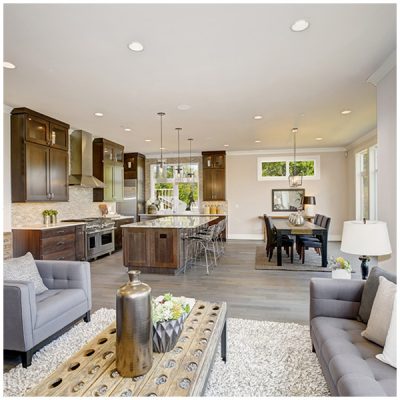
4. Playing With The Illusion Of Space
There is limited land, and limited physical space, but there is no limitation on the use of perceptual tricks & illusory correlations to enhance the look of a place. With strategic LED indoor lighting (use of hanging lights, spotlights), interior designers can create the illusion of a bigger space. Recessed lighting can boost the style of any place with minimal investment and altercation. Recessed led lights are available in many forms and shapes, and these can even be used on surface areas.
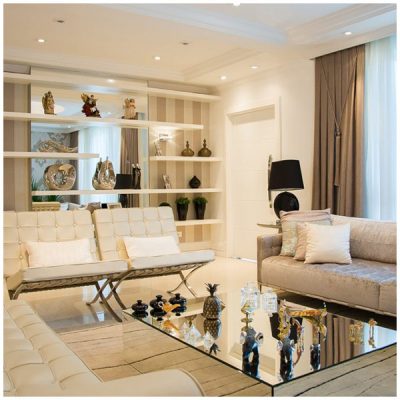
Lighting has quite an effect on the psychology of people. It influences perception, mood, motivation, optimism, and much more. Within the realms of interior design, it becomes crucial to use lighting for the advantage of the resident. Interior designers use different types of lights, different color temperatures, and a variety of lighting fixtures to set a particular mood, boost motivation, and more.
LED Indoor Lighting is the solution to a wide range of things. Within the domain of interior lighting options, mood lighting is progressing and being used commonly these days. Mood lighting is a tried-and-tested way to improve relationships, direct communications and boost the overall mood of the people in the room. A slight shift from the white light to the warm light can smoothen the tone of your conversations. Many leading LED lights manufacturers sell multiple-lighting bulbs, like a 3-in-1 light bulb. These are multi-purpose and efficient.
What are some primary mind-influencing indoor lighting ideas?
- Bright lights intensify the emotions, be it positive emotions or the negative ones
- LED lights with a blue tint (shorter wavelength) produce a calming effect in the environment
- Indoor LED lights with red tint (longer wavelength) are noted to be conducive to better sleeping
- Extreme brightness at the nocturnal hours can create abnormality in the sleep cycle
- A combination of day-light and bright artificial indoor lighting can significantly boost productivity
Latest Indoor Lighting Ideas For A Dynamic Home Interior
Use of LED Track Lights
Track lighting is a great way to pave out the direction for yourself and your visitors. The soft light of track lights oozes luxury and subconsciously, reduces mindless thinking. Mostly track lighting follows a linear pattern. It can be used to guide, lay focus on corners, or merely define walls. Interior designers choose to play with positions of track lighting to optimize vision and perception. Nowadays, there are different colors and multi-color track lights available, you can select as per your needs.
Statement Lights
The latest trend of 2021 in indoor lighting is statement lights. Statement lights are nothing but big lights as the focal points of a room. Most living rooms have a chandelier or a cluster of such lights – this trend is now expanding to other rooms as well. Many people prefer large pendant fixtures in the kitchen. In places like the washroom, large hanging spotlights are chosen. The purpose behind this is the ideology of making a statement in the most minimal ways. They are not just a way of lighting but also an accessory to the particular room.
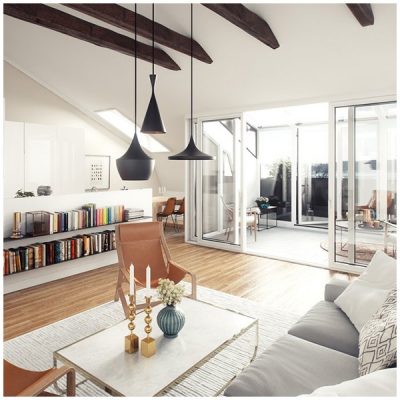
Geometric Lighting Patterns
Humans have always been attracted to patterns and symmetry. Geometric indoor lighting is a style of structuring led lights. The most famous among indoor lighting ideas is the placement of two identical wall sconces. Wall sconces are graceful lighting fixtures that add themselves as an element of home decor. There are options for two-way/three-way light fixtures as well. These lighting options create an illusion of a linear-contrasting pattern on the walls.
Alongside these three popular trends, people are opting for task lights and spotlights as prime indoor lighting options. There is quite an emphasis on accent lighting alternatives. All these indoor lights ideas can be executed through LED lights. LED lights are, primarily, the foremost choice for interior lighting and decor, as these are also safe to use for long hours.
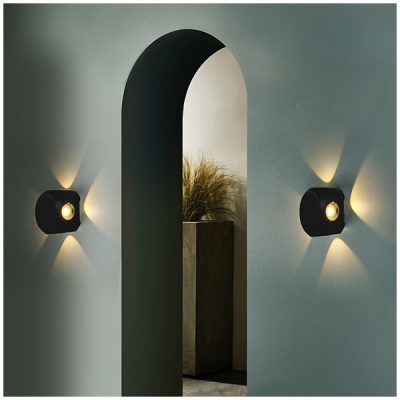
Light has a vast collection of indoor led lights. Their range of products is diverse, flexible, and modern. Light’s research team emphasizes energy-efficient technology that keeps both your pocket and the environment happy. The products of Light are made from the best raw materials, with sturdy exteriors and steady durability. Our products can be seen in-action across different places, from gyms to saloons.
The team of Light supports you throughout the journey. Our prime client, Delhi’s famous make-up artist Leena Bhushan’s new studio is brightened by our team. We curate modern and customized indoor lighting layouts, catering to all your artistic desires. We provide consultation services, installation support, and after-sales help as well.
Buy LED Indoor Lighting In Home’s Interior Designing
LED indoor lighting plays a crucial role in a home’s interior design strategy. It’s not just about illuminating a room; it’s about enhancing the mood, functionality, and aesthetic appeal of the space. The choice of lighting can dramatically change the way a room feels and how its design elements are perceived. Below are some of the key reasons why LED indoor lighting is important in interior design:
1. Energy Efficiency
-
LED lighting is one of the most energy-efficient options available. It uses significantly less energy than traditional lighting solutions like incandescent and halogen bulbs. As a result, it helps reduce electricity bills while contributing to a more sustainable and eco-friendly home.
-
Longevity: LED bulbs last much longer (up to 25,000 hours) compared to incandescent or fluorescent bulbs. This means less frequent replacements, making them a smart investment.
2. Flexibility and Versatility
-
LEDs offer extreme flexibility in terms of design and application. You can choose from a wide range of styles, colors, and brightness levels to match your interior design.
-
Whether you’re illuminating a living room, kitchen, bedroom, or even accentuating artwork or architectural features, LED lighting can be adapted to almost any need.
-
Adjustable color temperatures: LEDs come in a range of color temperatures from warm (yellow) to cool (blue) light, allowing you to control the mood of the room. For example, a warm white is cozy for the living room, while cool white is better for kitchens or workspaces.
3. Design and Aesthetic Appeal
-
Highlighting Architectural Features: LEDs are great for accent lighting, enabling you to highlight architectural details such as crown molding, built-in shelving, or textured walls.
-
Mood Setting: The adjustability of LEDs helps in creating various atmospheres, whether you’re going for a relaxed and cozy vibe (warm light) or a bright and energetic space (cool light).
-
Hidden Lighting: LEDs can be installed in hidden areas, like under cabinets, behind mirrors, or in false ceilings. This creates soft ambient lighting that enhances the room’s mood without taking up visual space.
4. Customizable Lighting Schemes
-
LED lights can be installed as part of dimmable systems, which means you can adjust the light’s intensity to suit different times of day, tasks, or events. For example, dimming the lights in the dining room can create a more intimate atmosphere during dinner, while full brightness might be needed for reading or cooking.
-
Smart LEDs: With smart lighting systems, you can control brightness, color, and even scheduling through apps or voice commands. This adds another layer of flexibility to your home’s interior design.
5. Improved Task Lighting
-
In spaces like the kitchen, study areas, or home offices, task lighting is essential. LED lights provide focused, bright light without causing glare or straining the eyes.
-
Under-cabinet LED lighting is commonly used in kitchens to enhance visibility for food prep. Similarly, LED desk lamps provide excellent illumination for working or reading, without taking up too much space.
6. Enhancing Room Size Perception
-
Lighting can visually alter the perception of a room’s size. Proper placement of LED strip lights or downlights can make a space feel larger, airier, and more open.
-
By strategically using light and shadow, interior designers can create a sense of depth and height, making smaller rooms feel more spacious.
7. Safety and Comfort
-
LED lighting is generally safer than traditional bulbs, as it doesn’t get as hot and reduces the risk of burns or fires. This is especially important in spaces like bathrooms or bedrooms where safety is a concern.
-
The gentle, even distribution of LED light can make spaces feel more comfortable, and their ability to reduce harsh shadows can also improve the overall mood of a room.
8. Low Maintenance
-
Unlike incandescent or fluorescent bulbs, LED lights require very little maintenance. Their long lifespan means fewer bulb changes, and their durability makes them less likely to break or malfunction, reducing overall maintenance costs.
-
Additionally, many LED fixtures come with built-in dimming and cooling systems, ensuring they operate smoothly for years without overheating.
9. Eco-Friendly and Sustainable
-
Since LED lights use less power, they help reduce your home’s carbon footprint. They also contain no harmful chemicals like mercury, which is often found in fluorescent bulbs.
-
Recyclability: Most LED lights are recyclable, making them a more environmentally friendly choice compared to traditional lighting options.
10. Increased Property Value
-
In terms of interior design, a home with well-placed lighting can significantly increase its perceived value. Homes that are well-lit, particularly with modern LED solutions, give a more premium feel and can be more attractive to potential buyers.
-
When done well, lighting can act as a design feature that enhances the aesthetic appeal of a home, making it more desirable.
LED Lighting Applications in Interior Design
-
Ambient Lighting: General lighting that provides overall illumination, such as ceiling lights or LED strips in recessed ceilings.
-
Task Lighting: Focused lighting for specific tasks like reading or cooking. LED desk lamps, under-cabinet lights, or pendant lights are great options.
-
Accent Lighting: Used to highlight specific design elements like paintings, sculptures, or architectural details. LED spotlights or track lighting work well here.
-
Decorative Lighting: LED lighting can also be used as a decorative element on walls or around windows to create a beautiful glow and add style to the room.
Best LED Lighting Options for Different Spaces
-
Living Room:
-
LED Recessed Lighting: For a clean and minimal look.
-
Floor Lamps & Wall Sconces: For accent lighting.
-
LED Strips: Under furniture or along the ceiling for mood lighting.
-
-
Kitchen:
-
Under-Cabinet LEDs: For better task lighting.
-
Pendant Lights: Over the island or dining area for ambient lighting.
-
LED Downlights: For even, soft lighting.
-
-
Bedroom:
-
LED Bedside Lamps: Adjustable lighting for reading or relaxation.
-
LED Cove Lighting: Built into the ceiling for soft ambient lighting.
-
LED Wall Panels: For a cozy and stylish touch.
-
-
Bathroom:
-
LED Vanity Lights: To brighten mirrors for grooming tasks.
-
Waterproof LED Strips: Around mirrors or along shelves for a luxurious feel.
-
-
Office or Study Area:
-
LED Desk Lamps: Provide bright and focused task lighting.
-
Wall-mounted LED lights: For softer, indirect lighting.
-
Conclusion: The Role of LED Lighting in Interior Design
LED indoor lighting is no longer just a functional necessity; it has become an essential tool for creating ambiance, enhancing aesthetics, and supporting the overall design strategy of a home. Its energy efficiency, versatility, and longevity make it the go-to choice for modern interior design, and its ability to adapt to different lighting needs (ambient, task, accent) makes it invaluable for any space.
When used strategically, LED lighting can highlight your home’s best features, optimize its functionality, and create an environment that matches your desired mood and style.
If you need help choosing the right type of LED lighting for specific rooms or want to explore more lighting design ideas, feel free to ask!